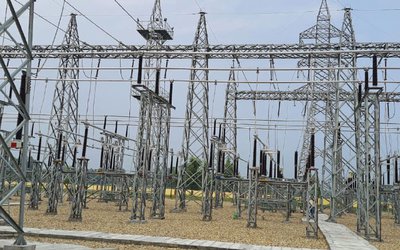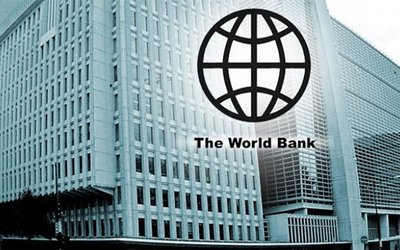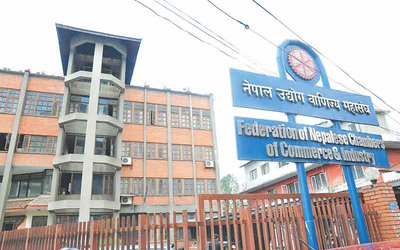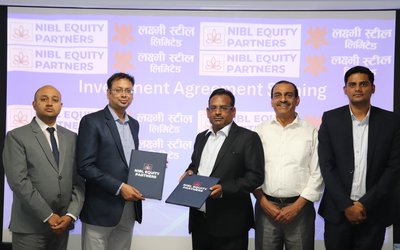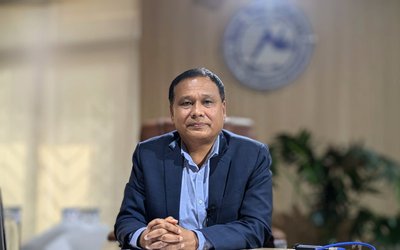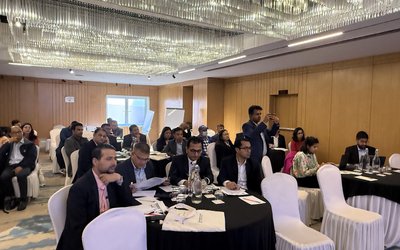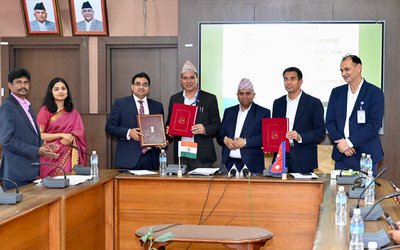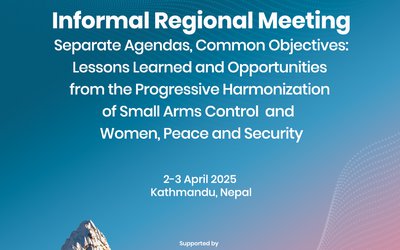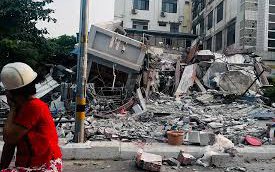Although Kaligandaki Hydropower Plant has a capacity of 144 MW, it is currently producing just 37 MW. As the river water recedes due to fall of mercury in the Himalayas, the generation capacity of the run-off-the-river hydro power plants goes down drastically.
As Nepal’s energy production has declined, the high level Nepal-India meeting that concluded recently agreed to prepare for the construction of another 400-KV transmission line, connecting the two countries.
The 4th meetings of the Indo-Nepal Joint Working Group (JWG) and Joint Steering Committee (JSC) on Power Cooperation concluded on February 13-14, in Kathmandu.
The Nepalese delegation for JWG was led by Dinesh Kumar Ghimire, Joint Secretary, Ministry of Energy and for JSC by Anup Kumar Upadhyay, Energy Secretary The Indian side for JWG was led by R.K. Verma,Chairman, Central Electricity Authority and for JSC by Power Secretary P. K. Pujari..
Nepalese side conveyed its deep appreciation for the efforts by the Government of India to supply enhanced quantities of electricity to Nepal that has made several parts of the country, including Kathmandu, free of load-shedding this winter.
“The current import 380 MW of power from India has been possible by virtue of the installation of additional transformer at Muzaffarpur by the Indian side, as also by technical improvements at Tanakpur at the request of the Nepalese side,” said a press release issued by Indian Embassy.
With the commissioning of two new lines - Raxaul-Parwanipur and Kataiya-Kusaha - the installed capacity for export of power to Nepal will increase by another 100 to 120 MW by the end of February 2017. Further, with completion of 220 kV substation at Dhalkebar, the installed capacity will increase to almost 700 MW by the middle of 2017.
The Indian side conveyed its willingness to supply additional electricity to Nepal. “On the existing and new transmission lines, the quantity and price of these supplies will be decided by the concerned agencies on the two sides. The Indian side also agreed to extend technical assistance for improvement of existing infrastructure so that the era of load-shedding can end in Nepal for good,” press release said.
The two sides also discussed construction of new transmission lines, keeping in view the power projects that are being developed. In this connection, New Butwal-Gorakhpur and Lumki-Bareilly transmission lines and new 400 kV sub-stations at Dhalebar, Butwal and Hetauda were also discussed.
While the modality of construction and funding would be deliberated in the Joint Technical Team, the Indian side expressed its readiness to consider new LOCs for construction of infrastructure on the Nepalese side.
“Discussing the progress of various hydropower projects, concern was expressed regarding delays in acquisition of forest land for Arun-III and Upper Karnali projects which have led to delays in works and economic viability of the projects. The Nepalese side conveyed that these issues would be resolved within two months,” said press release.
“The Indian side conveyed that the new guidelines issued by the Government of India on cross-border trade of electricity is fair and liberal and covers all elements of Power Trade Agreement. The guidelines provide a lot of comfort and certainty to power developers interested in exporting electricity to India. The Nepalese side appreciated the issuance of the guidelines,” said a press release.
With an increase in power demand, NEA’s distribution system is under pressure. Fortunately, however, India has come to rescue Nepal at this time of need, supporting the effort to end loadshedding.
Although Managing Director Kul Man Singh Ghising should be given the credit for his efforts to control domestic leakage and use his skill to manage the supply of electricity, load-shedding-free Kathmandu would not be possible without the import of electricity from India.
With the initiative of Indian Prime Minister Narendra Modi and Piyush Goyal, Minister of State with Independent Charge, Indian electricity utilities are supplying electricity to Nepal as per the requirement. However, Nepalese political leaders are bragging about ending the load-shedding as their big achievement, rarely mentioning the support from India.
Energy Minister Janardan Sharma’s effort to accelerate the work in the construction of Dhalkebar substation and other power projects is laudable. However, his effort alone would not be enough.
According to India’s Power Ministry, export of additional power through the cross-border transmission line helps “alleviate power shortage in Nepal due to seasonal reduction in supply from domestic hydro projects in winter months.”
As India is coming to rescue Nepal by supplying additional energy, Nepalese leaders and officials need to recognize this publicly rather than going after felicitation from people as their own success.

Keshab Poudel
Poudel is the editor of New Spotlight Magazine.
- FM Dr. Deuba’s India Visit: Mission Aborted
- Mar 26, 2025
- AMBASSADOR MAEDA TORU: Warm Regards
- Mar 24, 2025
- PRO-MONARCHY MOVEMENT: Rising Dissatisfaction
- Mar 23, 2025
- Dr. PRABIN MANANDHAR: Person With Humility
- Mar 16, 2025
- US SUSPESION OF GRANT: Impact On Nepal
- Mar 10, 2025
